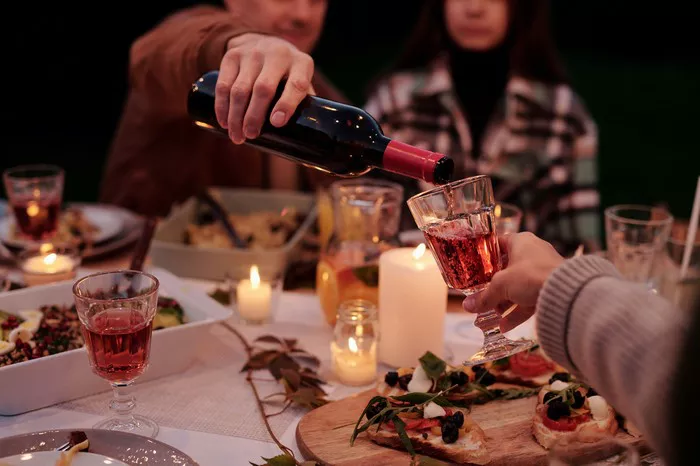Sancerre, a picturesque wine region located in the Loire Valley of France, is renowned for producing some of the world’s finest Sauvignon Blanc wines. A good Sancerre captures the essence of this unique terroir, delivering a sensory experience that showcases the region’s distinct characteristics. In this professional article, we will delve into what makes a good Sancerre, exploring the region’s terroir, winemaking techniques, flavor profiles, and food pairings, to help you appreciate the excellence of this exceptional wine.
The Unique Terroir of Sancerre
Sancerre’s terroir is at the heart of what makes its wines exceptional. The region’s hilly landscape, characterized by the renowned Sancerre hill (also known as Monts Damnés), consists of diverse soils, including limestone, chalk, and flint. These soils, combined with a temperate climate, offer the ideal conditions for Sauvignon Blanc to thrive.
The Sancerre hill’s vineyards benefit from excellent sun exposure and excellent drainage, contributing to the grapes’ maturation and flavor development. The terroir imparts minerality, vibrant acidity, and a distinctive flinty character to the wines, which are hallmarks of a good Sancerre.
Winemaking Techniques
The winemaking techniques employed in Sancerre play a significant role in shaping the quality and character of the wine. Here are some key aspects of Sancerre winemaking:
Hand Harvesting: Many Sancerre producers choose to hand-harvest their grapes to ensure the careful selection of ripe and healthy fruit.
Gentle Pressing: After harvesting, the grapes are gently pressed to extract the juice without damaging the skins. This process helps preserve the wine’s delicate flavors.
Fermentation: Fermentation is typically carried out in temperature-controlled stainless steel tanks. This allows for a slow and controlled fermentation process, preserving the wine’s freshness and aromatics.
Lees Aging: Some Sancerre wines are aged on the lees (yeast cells), which adds complexity and richness to the wine. Lees aging can vary in duration, with some wines aged for several months.
Sulfur Usage: Sulfur dioxide is used sparingly to protect the wine from oxidation and spoilage. A good Sancerre balances the use of sulfur to maintain the wine’s purity and freshness.
Flavor Profile of a Good Sancerre
A good Sancerre showcases a vibrant and complex flavor profile that reflects the unique terroir and varietal characteristics of Sauvignon Blanc. Key flavor attributes of a quality Sancerre include:
Citrus: Sancerre often features citrus notes, including lemon, lime, and grapefruit. These bright flavors are enlivened by the region’s refreshing acidity.
Minerality: The flinty and chalky soils of Sancerre impart a mineral character to the wine. This minerality adds depth and complexity to the flavor profile.
Herbaceousness: Sauvignon Blanc’s herbaceous qualities can shine in Sancerre. A good Sancerre may exhibit herbaceous notes like fresh grass, green bell pepper, or gooseberry.
White Flowers: Aromatic white flower notes, such as elderflower and acacia, often add a layer of floral elegance to the wine.
Racy Acidity: Sancerre’s hallmark is its racy and mouthwatering acidity, which contributes to a refreshing and crisp finish.
Food Pairings for Sancerre
The versatile and elegant nature of Sancerre makes it an excellent companion for a wide range of dishes. Here are some classic and creative food pairings that enhance the enjoyment of a good Sancerre:
Seafood: Sancerre’s citrus notes and high acidity make it a perfect match for seafood dishes, including oysters, mussels, and grilled fish.
Salads: Sancerre complements salads, especially those with vinaigrette dressings, as its acidity balances the flavors.
Goat Cheese: The herbaceous and citrusy qualities of Sancerre pair beautifully with goat cheese, making it a classic combination.
Asparagus: Sancerre’s herbaceous notes harmonize with the earthy and grassy flavors of asparagus, creating a delightful pairing.
Sushi and Sashimi: Sancerre’s acidity enhances the flavors and textures of sushi and sashimi, making it a favorite choice among wine enthusiasts.
Poultry: Sancerre is versatile enough to complement a variety of poultry dishes, from roast chicken to turkey.
Quiches: The fresh and bright character of Sancerre pairs wonderfully with quiches, especially those with spinach or leeks.
Choosing a Good Sancerre
When selecting a bottle of Sancerre, there are several factors to consider to ensure you’re getting a quality wine:
Producer Reputation: Research and choose reputable producers with a track record of crafting excellent Sancerre. Well-regarded producers often adhere to high standards of winemaking.
Vintage: The vintage can significantly impact the character of the wine. Some vintages may be known for their exceptional quality. Keep an eye out for well-regarded Sancerre vintages.
Terroir: Sancerre’s terroir varies, even within the region. Consider the specific vineyard or village within Sancerre, as it can influence the wine’s character.
Style: Sancerre can come in various styles, from light and zesty to richer and more complex. Choose a style that aligns with your palate preferences and the type of food you plan to pair it with.
Wine Reviews: Reading wine reviews and ratings from trusted sources can provide valuable insights into the quality of a Sancerre.
Conclusion
A good Sancerre is a testament to the unique terroir of the region, the expertise of its winemakers, and the innate qualities of the Sauvignon Blanc grape. The hilly landscape, diverse soils, and meticulous winemaking practices of Sancerre converge to create wines that are celebrated for their vibrant acidity, minerality, and refreshing flavors.


